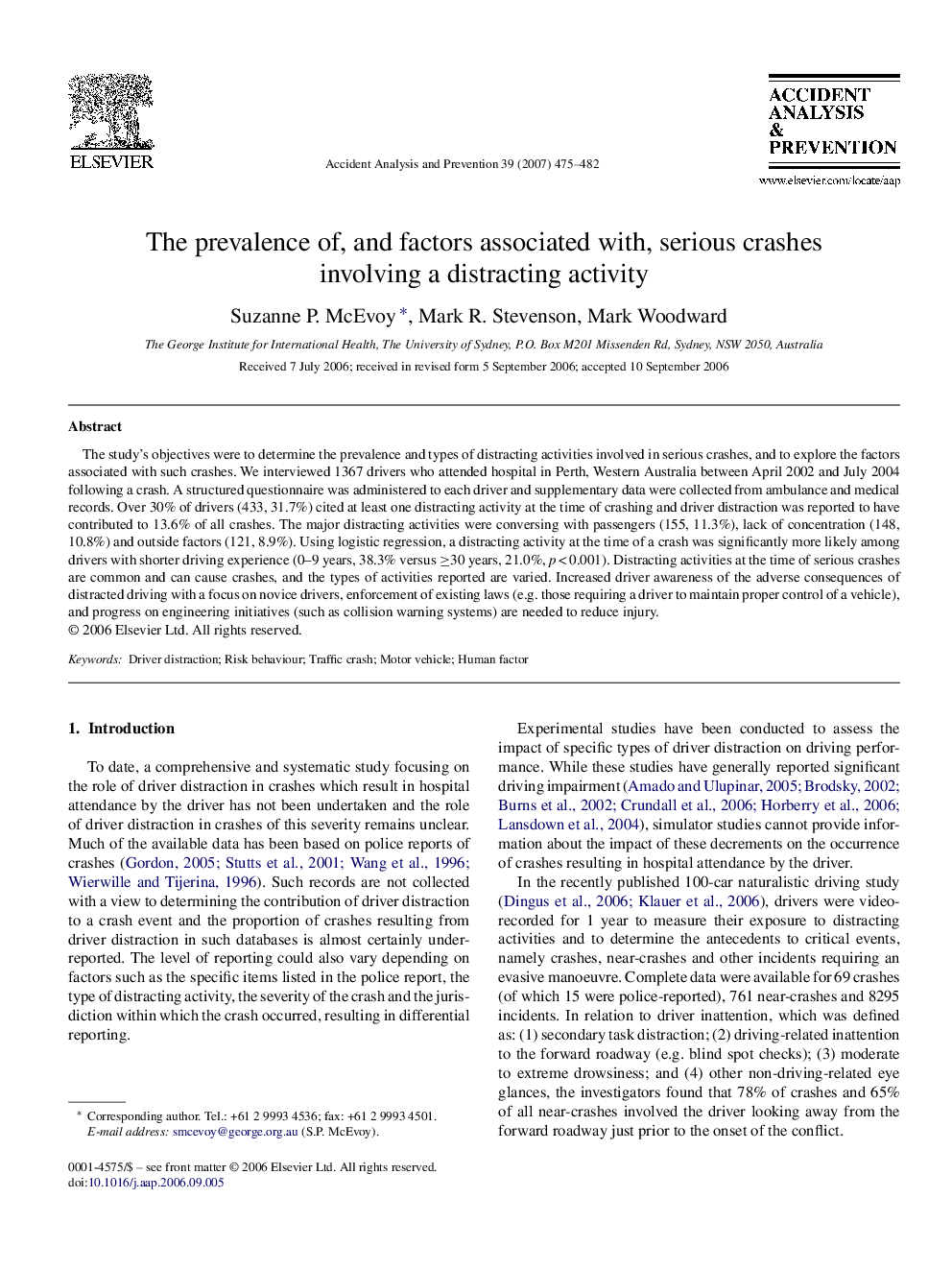| Article ID | Journal | Published Year | Pages | File Type |
|---|---|---|---|---|
| 573821 | Accident Analysis & Prevention | 2007 | 8 Pages |
The study's objectives were to determine the prevalence and types of distracting activities involved in serious crashes, and to explore the factors associated with such crashes. We interviewed 1367 drivers who attended hospital in Perth, Western Australia between April 2002 and July 2004 following a crash. A structured questionnaire was administered to each driver and supplementary data were collected from ambulance and medical records. Over 30% of drivers (433, 31.7%) cited at least one distracting activity at the time of crashing and driver distraction was reported to have contributed to 13.6% of all crashes. The major distracting activities were conversing with passengers (155, 11.3%), lack of concentration (148, 10.8%) and outside factors (121, 8.9%). Using logistic regression, a distracting activity at the time of a crash was significantly more likely among drivers with shorter driving experience (0–9 years, 38.3% versus ≥30 years, 21.0%, p < 0.001). Distracting activities at the time of serious crashes are common and can cause crashes, and the types of activities reported are varied. Increased driver awareness of the adverse consequences of distracted driving with a focus on novice drivers, enforcement of existing laws (e.g. those requiring a driver to maintain proper control of a vehicle), and progress on engineering initiatives (such as collision warning systems) are needed to reduce injury.
